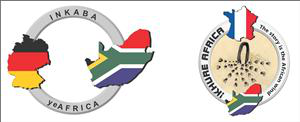Conveners
Strain
- Stoffel Fourie (TUT)
Strain
- Stoffel Fourie (TUT)
Mr
Gideon Brunsdon
(Nelson Mandela Metropolitan University)
03/10/2014, 09:00
Oral and Poster Presentation
Previous studies of the Bokkeveld Group focussed mostly on the sedimentation and sedimentary features of this group with a view to interpreting the depositional environment. This study aims to contribute new information on the structural features of the Bokkeveld Group north-west of Uitenhage in the Eastern Cape, where there is evidence of folding and pervasive thrust faulting, similar to...
Mr
Ian Saunders
(Council for Geoscience)
03/10/2014, 09:15
Oral and Poster Presentation
We investigated 1 380 earthquake epicenters that were located through the single-station location method during routine data analysis of the South African National Seismograph Network for the period October 2010 to December 2012. Epicenter locations determined through single-station analysis prompted reports of an increase in seismicity originating from residents in the towns of Ceres and...
Ms
Mpho Mogoswane
(Tshwane University of Technology)
03/10/2014, 09:30
Oral and Poster Presentation
The most important requirements to the study and understanding of seismicity in any region is through the accurate location of earthquakes within the area of interest. Earthquake bulletins compiled from routine seismic analysis basically forms the basis of this research. These bulletins in principle consist of phase information (most often body-wave travel-time readings) observed at different...
Ms
Charmaine Mahlagaume
(Tshwane University of Technology)
03/10/2014, 09:45
Oral and Poster Presentation
One of the fundamental requirements to the study and understanding of seismicity in any region is through the accurate location of earthquakes within the area of interest, determining spectral parameters and seismic moments. The principle aim of this study is re-evaluating the phase readings and location of the instrumentally recorded earthquakes in the Eastern Cape Province of South Africa...
Ms
Malebo Sharon Rakgalakane
(Tshwane University of Technology)
03/10/2014, 10:00
Oral and Poster Presentation
The National Academic Co-located Seismology Network is a collaborative project between Hartebeesthoek Radio Astronomy Observatory (HartRAO) and Tshwane University of Technology (TUT) whereby at least twelve seismic stations are to be built across South Africa, Marion and Gough islands. These stations are to continuously monitor real-time seismic events for scientific use and seismic risk...
Mrs
Rookshana Ebrahim-Trollope
(University of Cape Town)
03/10/2014, 10:15
Oral and Poster Presentation
Natural seismicity within South Africa is limited to low-moderate magnitude intraplate activity broadly grouped into clusters such as Ceres, Koffiefontein, Lesotho and Namaqua clusters or swams. Intraplate seismicity is ~ 10 % of global natural seismicity with a smaller Mmax in South Africa of about ML = 6.3. The vast majority of “recorded” seismicity in South Africa occurs in the...
Prof.
Peter Booth
(Research Associate - NMMU)
03/10/2014, 11:00
Oral Presentation
The Cape Fold Belt (CFB) which lies along the southern margin of the African continent incorporates deformation of the Cape Supergroup, its basement rocks, as well as the lower Karoo Supergroup in the southern part of the larger Karoo Basin. The fold belt forms part of a larger tectonic picture that correlates with other remnants of Gondwana, thus confirming a late Palaeozoic-early Mesozoic...
Mr
Eric Saffou
(University of the Western Cape)
03/10/2014, 11:15
Oral and Poster Presentation
The distribution of strain and its variation within geologic terranes have always been a matter of great interest to structural geologists. The absence of good markers, especially in metamorphic zones has made strain analysis a very laborious task. A work flow for finite strain analysis is presented in this study. In the development of the work flow two important points were considered;...

